There’s a lot of conflicting information out there on whether you can use mink oil on suede. Some people say it’s the best way to protect and care for your suede, while others claim that it will ruin the material. So, what’s the truth? In this article, we’ll explore all of the options and give you our expert advice on what to do with your suede items.
Why Would You Want to Use Mink Oil on Suede?
Suede leather is a type of leather that has been brushed or buffed to create a soft, velvety nap. It is usually made from the underside of cowhide and other animal hides, although it can also be made synthetically using man-made products like polyester and nylon. Its softness makes it ideal for jackets, shoes, and other clothing items.
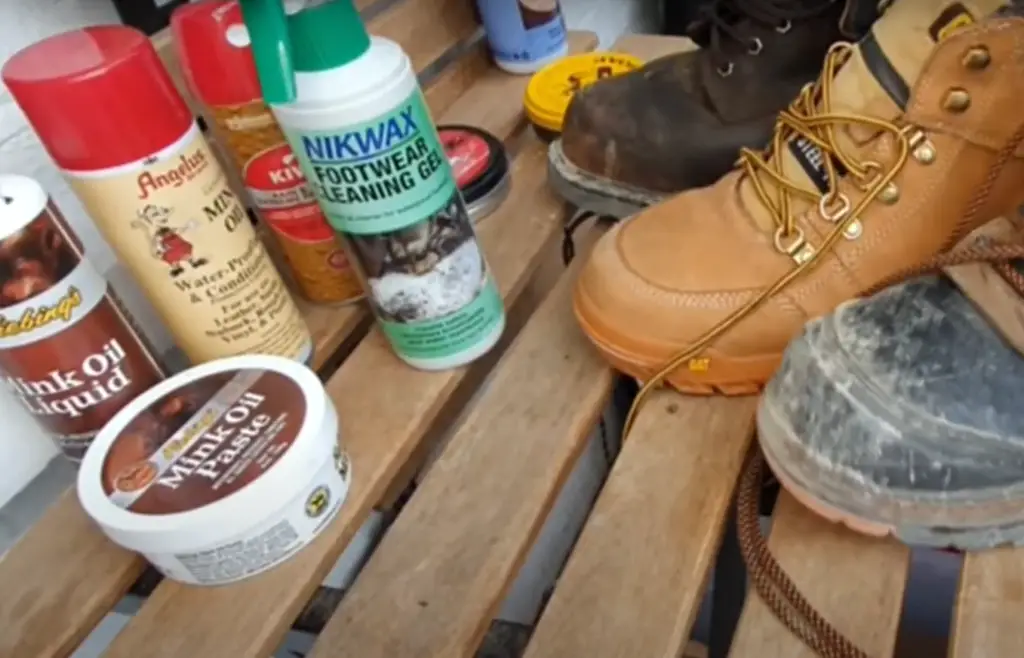
Because of its softer texture, suede leather requires special handling and care. It is more sensitive to a variety of elements including dirt, rain, and snow. If it isn’t properly cared for, it can become stained or damaged over time. [1] [2] [3]
Can You Use Mink Oil on Suede?
Since suede is such a delicate material, no wonder people often wonder if mink oil is safe to use on it. The answer is yes and no. As to why we will explain it in detail in this very section!
It can darken the suede
One of the most important things to consider when using mink oil on suede is that it will likely darken the material. This is because mink oil has natural oils that penetrate the top layers of leather, which can cause a color change. Therefore, if you’re looking for an easy way to waterproof or soften your suede, keep in mind that this could also potentially alter its appearance.
While you technically can use mink oil on darker suede, it is not recommended for lighter shades of suede. You certainly don’t want to ruin your light-colored suede shoes or jackets by using mink oil on them!
It can harden the suede
Mink oil is a lubricant. It not only softens and conditions the leather, but it also helps to protect it. This is great if you want your suede boots to be more resistant to water and dirt. However, too much of it can cause the material to harden over time.
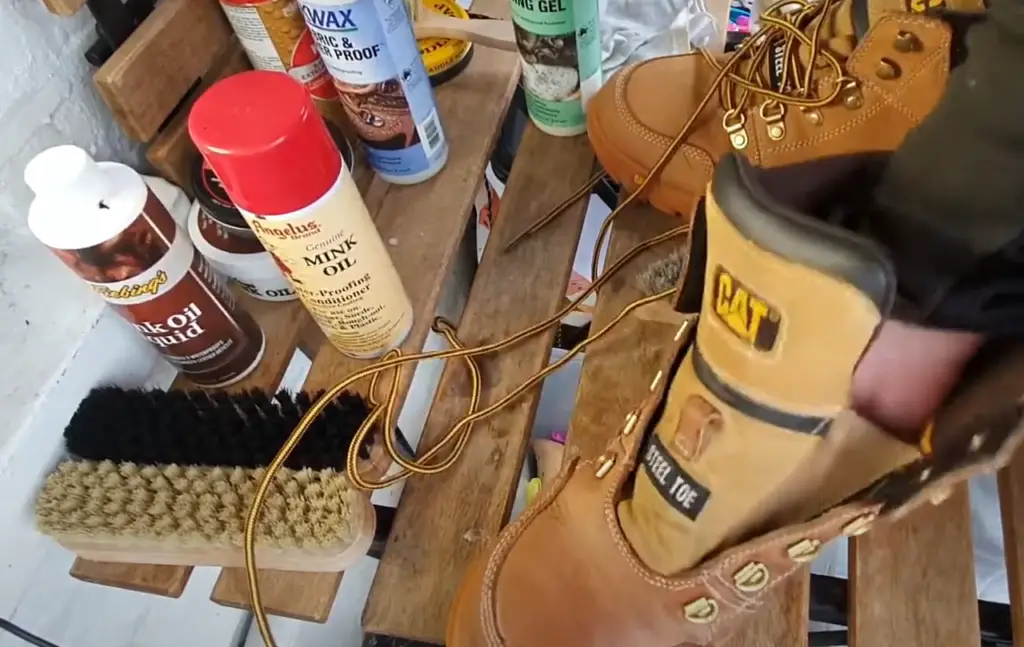
This isn’t the process that happens right away but over time, overuse of mink oil can lead to the hardening and cracking of suede.
It’s hard to apply on suede
Mink oil is a great product and can make the leather on your shoes more flexible and waterproof, but it’s not very efficient to use on suede. This is because of its thick consistency; when applied directly to suede, mink oil tends to clog up the nap of the material, making it difficult for you to brush or buff away excess residues.
In addition, due to the structure of suede, it’s hard to get mink oil smoothly applied across the entire surface. This can leave your suede looking patchy and uneven.
Mink oil has a sticky feel to it
Mink oil is sometimes referred to as “grease” due to its sticky consistency. While this can be beneficial in some cases, it is not ideal for suede. Mink oil has the tendency to affect the material and make it feel tacky when used and making it difficult to clean or remove any dirt that may have become embedded into the fabric. So unless you are absolutely sure about its effects, it is best not to use mink oil on suede.
You don’t want your comfortable suede jacket or shoes to become sticky!
It’s not as powerful at repelling water as some make it out to be
As we mentioned, suede is a type of leather characterized by its soft, fuzzy texture and distinct look. It’s much more delicate than other types of leather and requires special care to maintain its unique properties over time.
One of the most important things to remember when caring for suede is that it should never be exposed to water or any form of moisture. This is because suede can easily absorb moisture and become saturated with it, causing the fibers in the material to swell and discolor. In some cases, the entire piece may need to be replaced if it has been completely soaked through. Because of this, people often seek options for protecting their suede from water and other forms of moisture.
Mink oil is known to be a great leather conditioner because of its ability to repel water. However, when it comes to suede, mink oil tends to saturate and soften the material, making it less resistant to water damage. Thus, if you plan on using mink oil on suede to protect it from rain and snow, consider looking for another product that can offer better protection.
It’s a pretty pricey cleaning option for suede
Mink oil is also quite pricey for a cleaning product. You could end up spending more money on mink oil than you would on a specialized suede cleaner or conditioner. Even if your suede item needs some extra protection from the elements, it’s still better to invest in a quality product designed specifically for use on this type of material.
And considering all the other points we covered above, why would you spend a lot of money on something that might not even work for your suede item?
It offers little to no benefits for suede
Mink oil is primarily used to condition and waterproof leather. It might leave suede looking nice and shiny, but it will also change its structure, make it more prone to dirt and water stains, as well as damage the leather by breaking down its fibers.
So you might consider looking for a more suitable product for your suede shoes, such as suede conditioner. It will help keep them clean and soft without damaging the material’s molecular structure. [1] [2] [3]
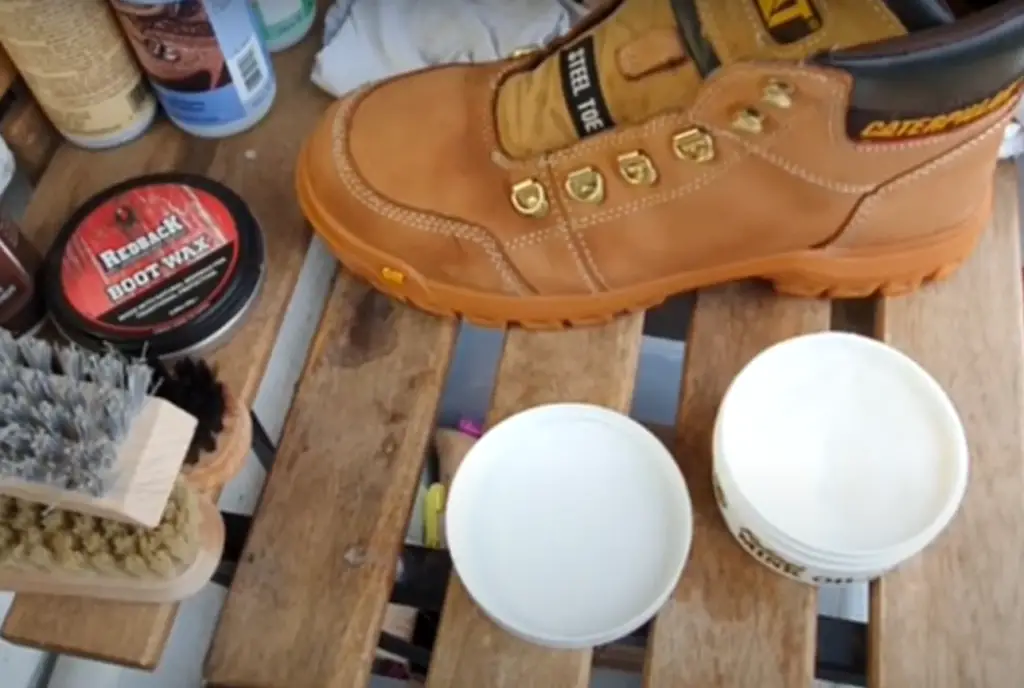
How to Properly Apply Mink Oil to Suede?
If you have decided to take a risk and use mink oil on your suede, the most important thing is to apply it correctly. Doing so will ensure that your leather remains in good condition and won’t be harmed by applying the mink oil.
Clean your suede
Before you even think about applying mink oil to your suede, it is essential that you clean it first. This will help ensure that the oil can be properly absorbed into the material and won’t create any unwanted build-up on the surface of your suede.
To do this, you should use a soft brush. Start at the top of your item and gently brush downwards, using small strokes. This will help to remove any dirt or dust that has accumulated on the surface.
We recommend using a suede brush for this job. Suede brushes are designed specifically for cleaning and restoring the nap, texture, and color of the suede. They come in two varieties – with or without brass bristles. Brushes with brass bristles are more effective at lifting dirt from the suede’s surface and can be used to agitate any mink oil that is applied.
Brushes without brass bristles are softer on the material and won’t damage it as much if you brush too hard. However, they don’t have enough lift to clean deep into the suede fibers like a brush with brass bristles would.
For optimal results, use both a brush with and without brass bristles for your suede cleaning needs. Start by using the one without any metal pieces to gently clean off surface dirt and debris, then switch to the brush with brass bristles to remove any dirt or debris.
If your suede happens to have some stains – a suede eraser will be a lifesaver. A suede eraser is a type of cleaning product used to remove dirt and residue from the nap of suede shoes, bags, and apparel. The eraser has a dry, hard block of a rubber-like material that effectively removes tough stains like mud, oil, and watermarks with minimal effort.
Suede erasers can also be used to revive flattened naps on suede items. The block runs across the surface of the fabric in circular motions or back and forth which helps restore its texture. This method is often more effective than using an abrasive brush alone.
Apply mink oil
Now that your suede is clean, you can move on to applying the mink oil. For starters, you should only use a small amount of mink oil on your leather as too much will cause it to become overly soft and reduce its lifespan.
Instead, start by taking a clean cloth and dipping it into the oil. Make sure you don’t put too much on the material – it should just be lightly dampened with the oil.
Once you’ve done this, take the cloth and rub it in circular motions across your suede item. The best way to do this is to start from one side of the fabric and work your way across in horizontal strokes.
Be sure to not forget about the tight corners and crevices on your item as these are often forgotten.
Once you’ve finished, it’s time to remove the excess oil. To do this, you should use a clean cotton cloth. This cloth should be dry and free from any moisture, as moisture can cause discoloration on suede.
Gently wipe the material until no more oil is visible, then leave it to air-dry for an hour or two to allow the leather time to absorb the oils.
Dry your suede items
After your item has dried, you might notice your suede is sticky. Do not worry, however. If you have done everything properly, it should return to normal after drying. Simply leave your suede items in a well-ventilated room until the stickiness fades away. This can take up to a few days, depending on how much oil you used and how long it took the suede to absorb it.
Once your item is no longer sticky and has returned to its natural texture, you can use it!
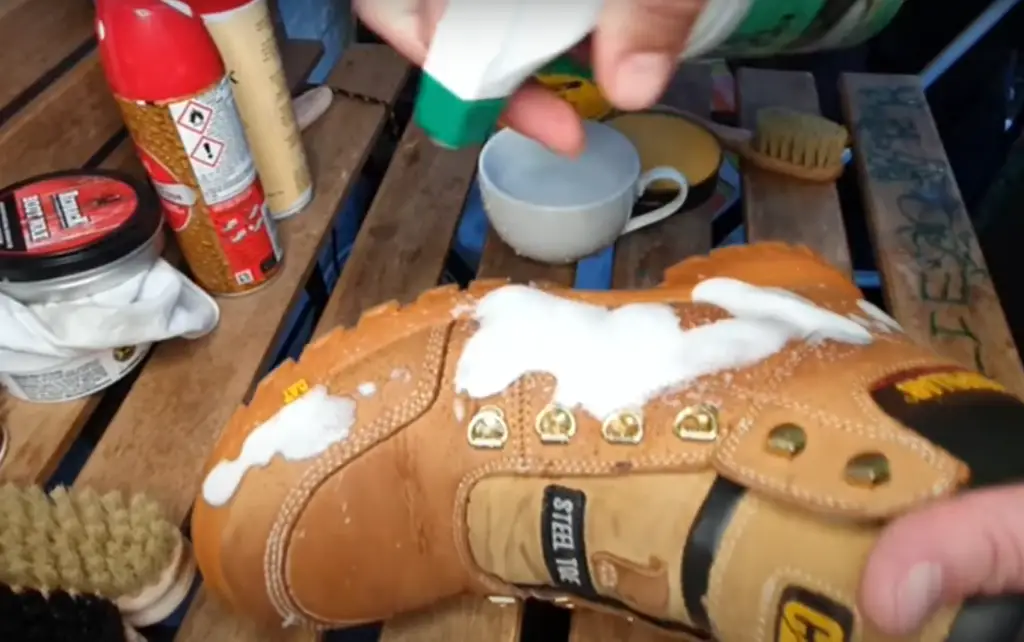
Never attempt to speed up the drying process by using a hairdryer or other heat source as this can cause significant damage to the suede.
Finally, make sure you store your item properly in order to extend its lifespan and keep it in good condition. Keep it away from any extreme temperatures such as heaters, radiators, and direct sunlight. If you do have any questions about mink oil and whether it is suitable for your suede items, consulting a professional leather worker might be your best bet for getting the answers you need. [1] [2] [3]
A better alternative
As you can see, while it’s possible to use mink oil on suede, it’s not the best option and can potentially cause damage to the material. When it comes to caring for suede, there is a single alternative you can use in place of mink oil. Let’s discuss these in more detail.
Suede protector spray
Suede protector spray is a specially formulated product designed to offer protection from water damage, dirt, and oil. It should be applied liberally to the suede item and allowed to dry completely. Once that’s done, your suede will be protected from water and other elements.
Another great thing about this product is that it won’t change the color of your suede or ruin its delicate structure like mink oil might. This makes it an ideal choice for those who want to protect their expensive suede items without having to worry about potential damage.
Just be sure not to overuse the protector spray as too much of it can weaken the material and cause discoloration. It’s best to use it only when necessary or every few months for preventive care. [1] [2] [3]
FAQ
Can suede be conditioned?
Conditioning a suede can be quite difficult and should be done carefully and sparingly. A suede’s delicate nature means that it can easily be damaged or discolored if not cared for properly.
Generally, the best way to take care of suede is by simply brushing it after use and applying a special suede protectant that helps guard against water and oil.
Can mink oil be used on suede leather?
No, mink oil is not recommended for use on suede leather. It can darken the material and make it more prone to water damage. Instead, it’s best to look for a specialized cleaner or conditioner specifically designed for use with this type of material.
What oil can I use on suede?
Coconut oil is a safer alternative to mink oil for use on suede. It can help condition and soften the material without darkening it, and is relatively affordable compared to other oils. You can also purchase specialized suede protectants that are specifically designed to guard against dirt, water stains, and rain.
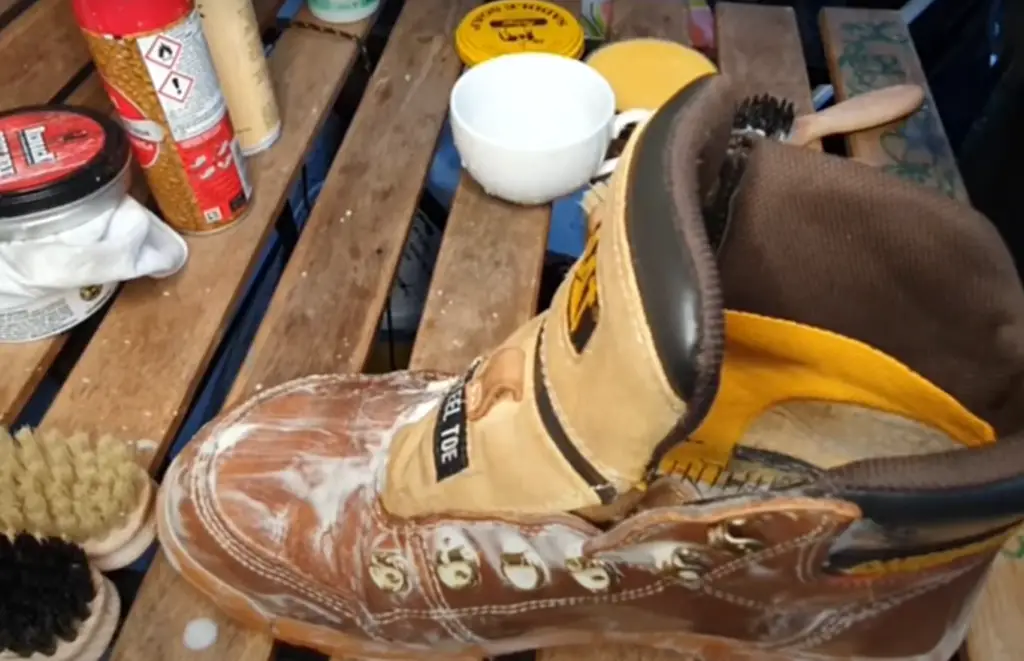
However, it too has a risk of darkening the suede so it’s best to test the oil in an inconspicuous area first. Also, take extra care when using coconut oil as it can be difficult to remove if over-applied.
Is mink oil good for suede shoes?
No, mink oil is not recommended for use on suede shoes. While it can give them a nice shine, it will also saturate the material and make it more prone to dirt and water stains. Additionally, using mink oil on suede will break down the fibers of the leather over time, causing irreparable damage that can only be fixed with a complete replacement of the item.
Your lighter suede shoes might suddenly darken and become water-repellent if you use mink oil on them. If you want to protect your suede shoes from the elements, look for a quality product designed specifically for use on this type of material.
Useful Video: Will Mink Oil RUIN Suede Or Nubuck Leather Work Boots?
Conclusion
In conclusion, it is safe to say that you can use mink oil on suede with caution. The key here is moderation and knowledge – know what type of suede you are using and how much mink oil will be necessary for the job, without resulting in discoloration or hardening of the material.
Still, we believe you should use mink oil as your last resort and only if absolutely necessary. If you can find a cleaner and conditioner specifically designed for suede, that should be your preferred choice.
Not only can mink oil darken or harden your suede, but it also can make it all sticky and greasy. Of course, you can use a brush to get rid of the excess product, but it will take time and effort.
We recommend testing mink oil on an inconspicuous area before applying it to your entire suede item. That way, if something goes wrong, you’ll be able to stop the process in its tracks without ruining your item entirely.
And its waterproofing capabilities are very overestimated. It can offer some protection, sure, but not as much as a suede protector spray.
Finally, always remember that prevention is better than cure – taking proper care of your suede items with cleaning products designed for them is the best way to make sure they stay in top condition for longer. For suede it’s a special suede protector. So why not give that a try? Good luck!
References:
- https://noblesole.com/blogs/news/80090244-s-o-s-save-our-suede
- https://favoredleather.com/mink-oil-is-not-good-for-suede/
- https://favoredleather.com/is-mink-oil-good-for-suede/

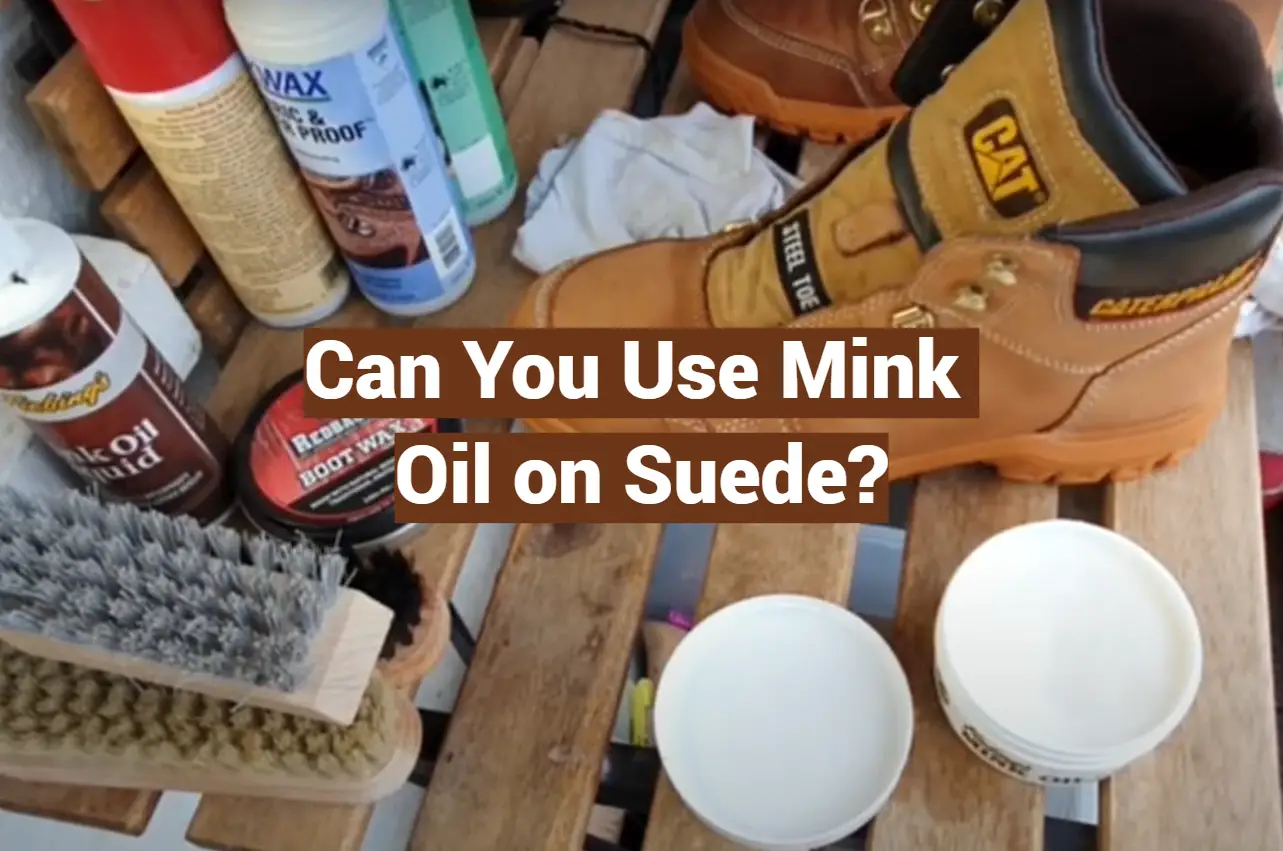


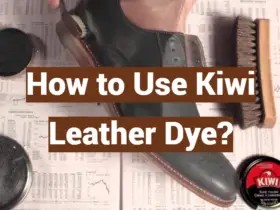


Leave a Reply